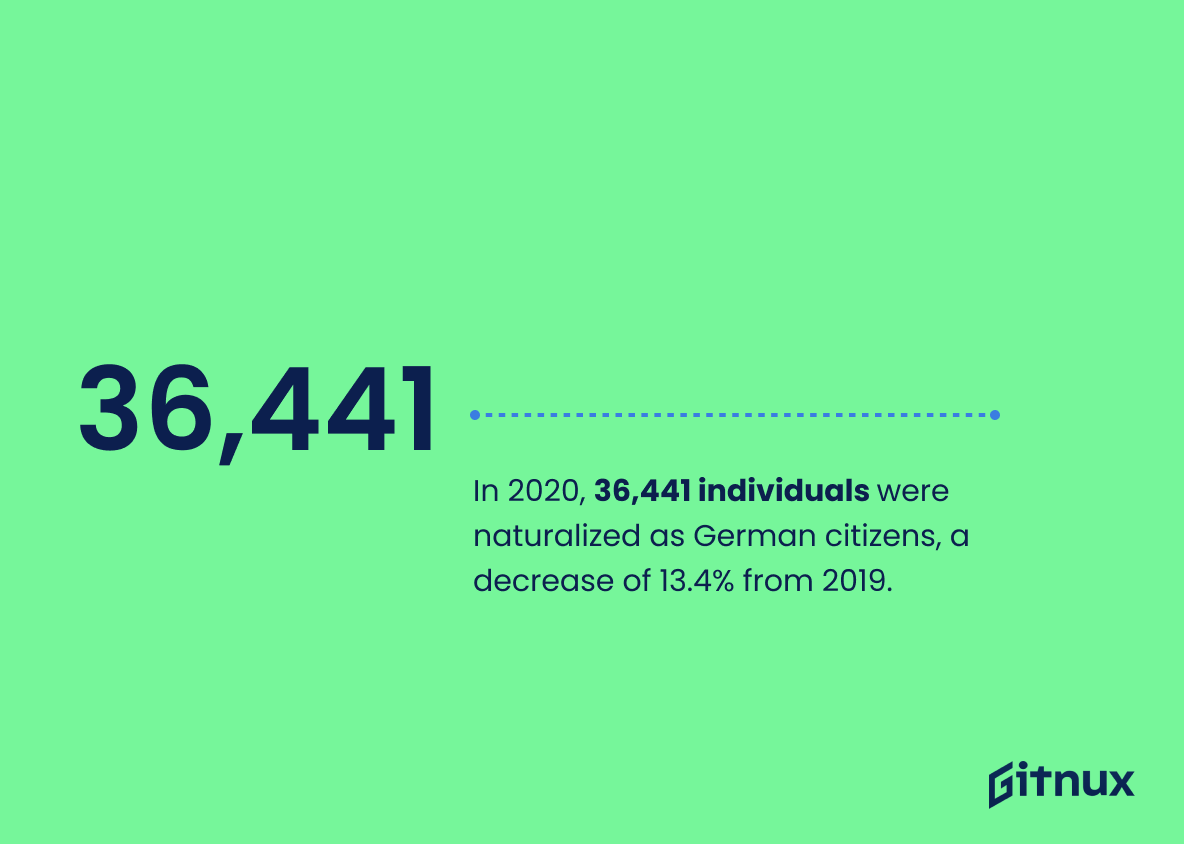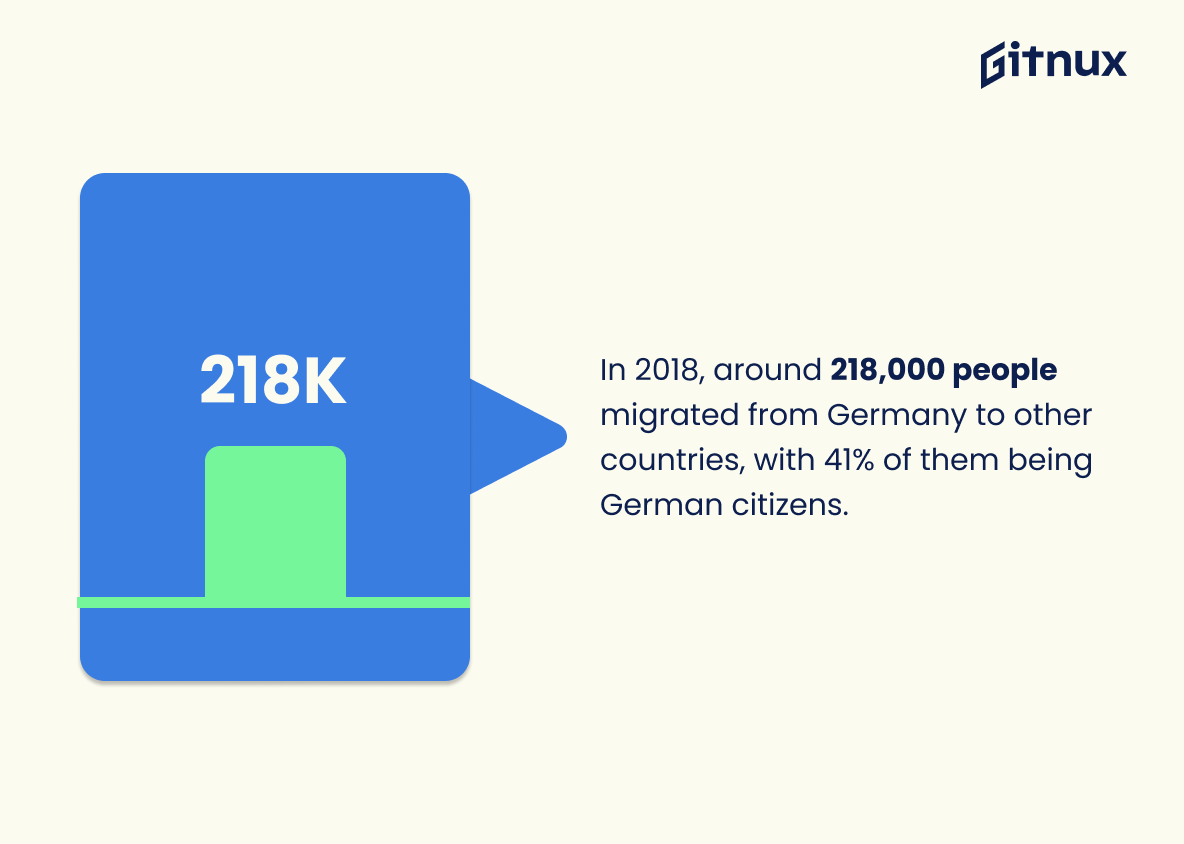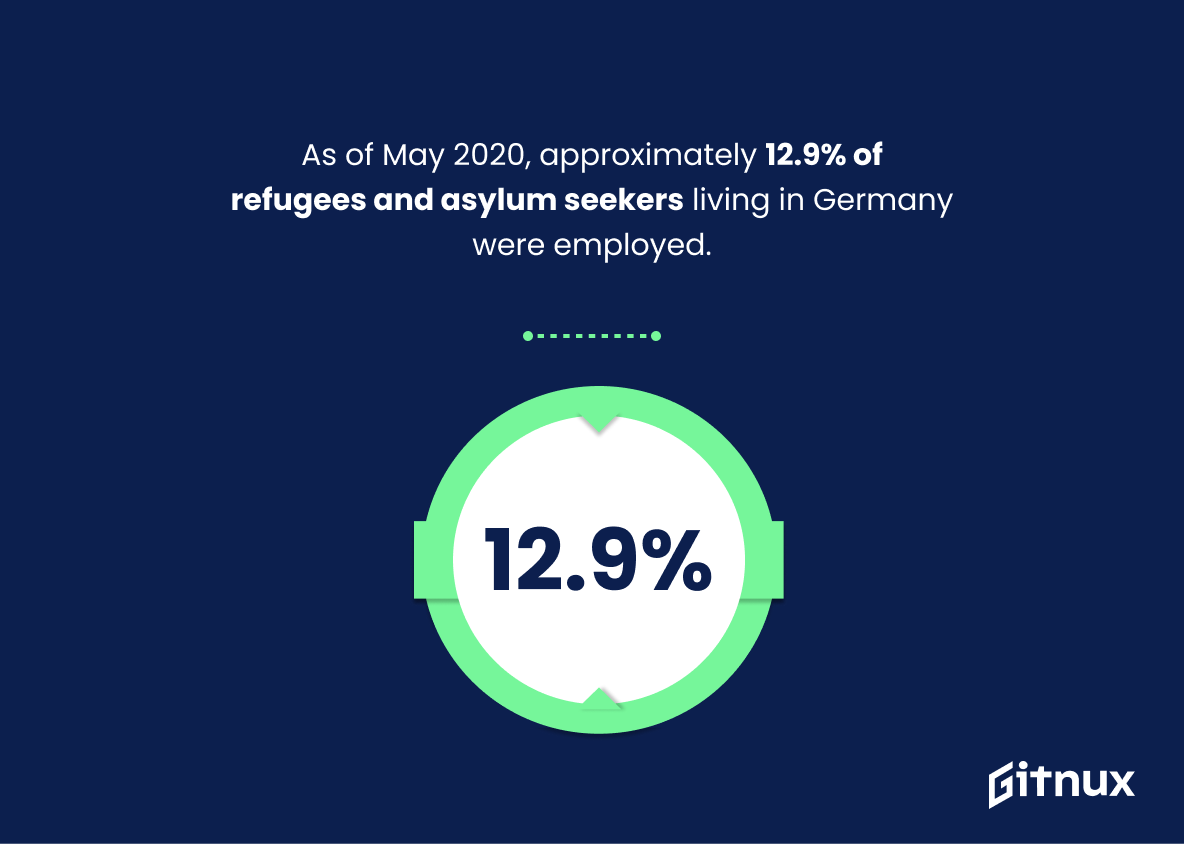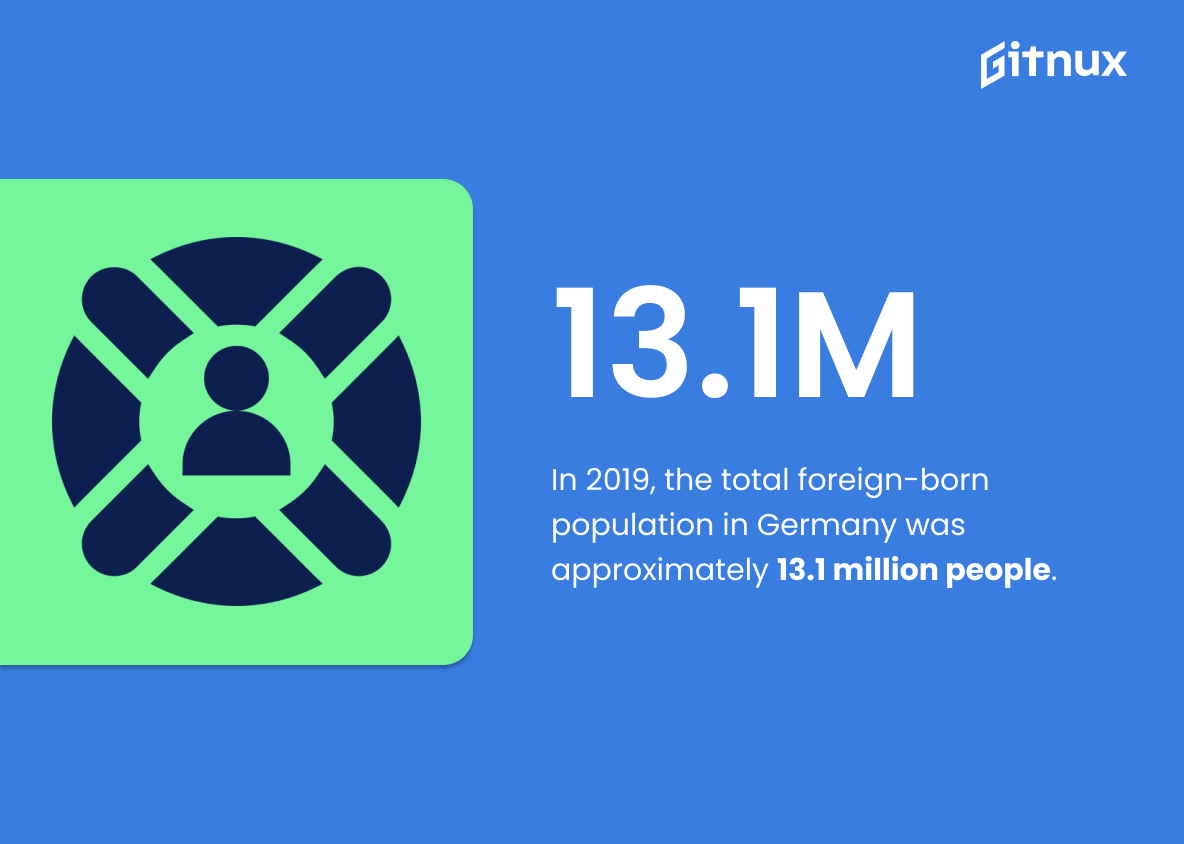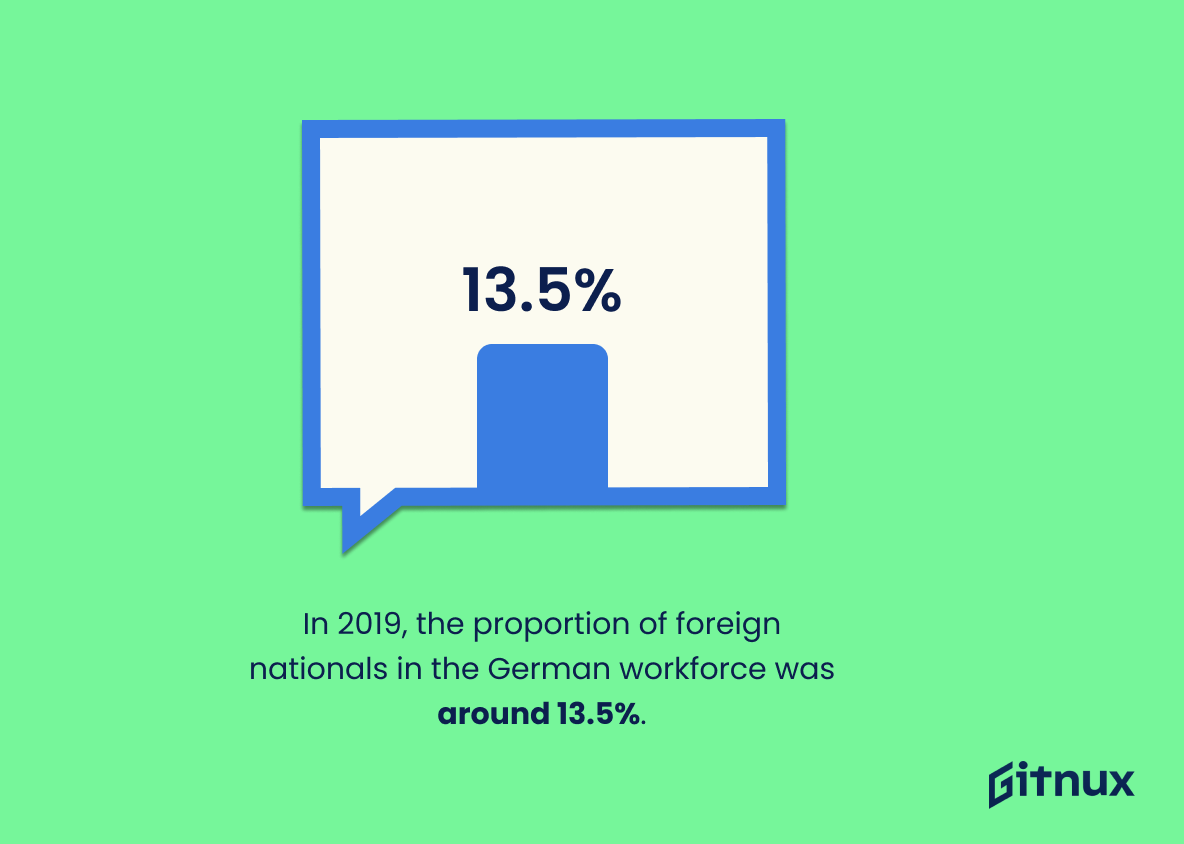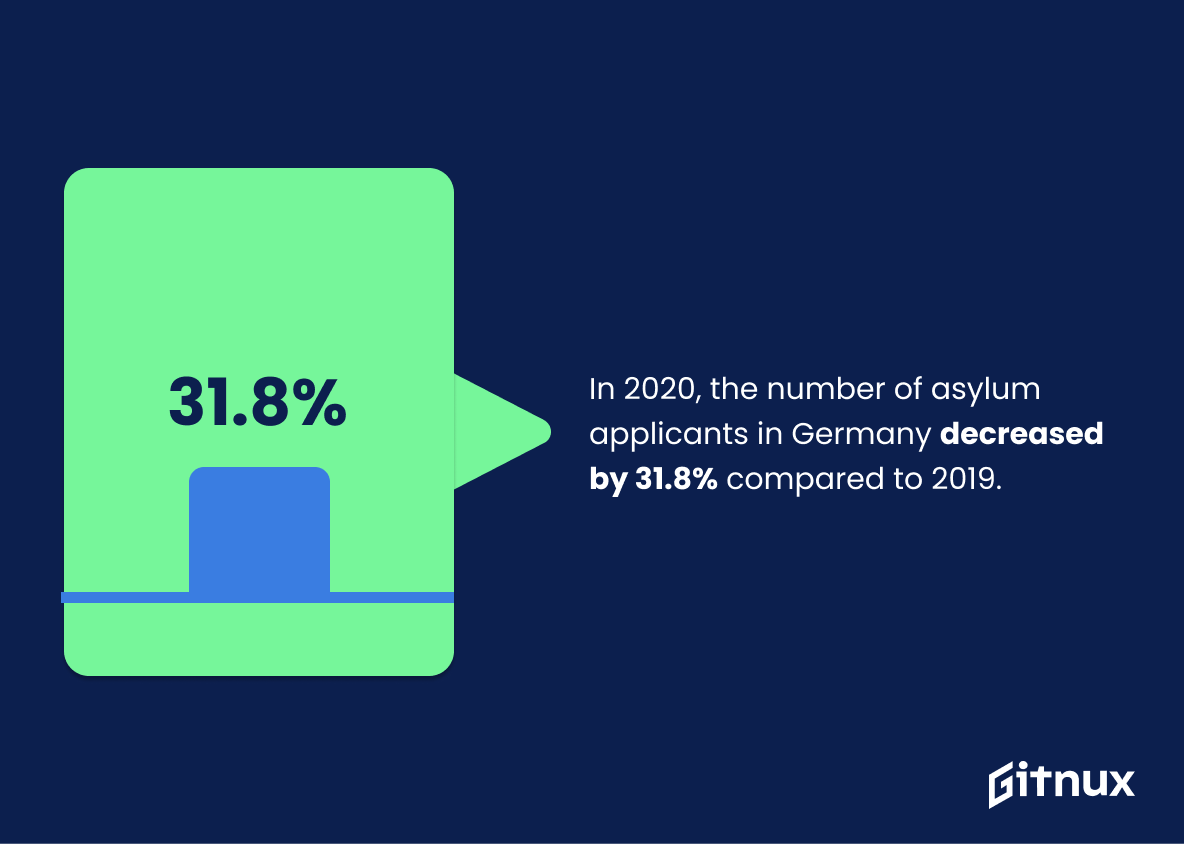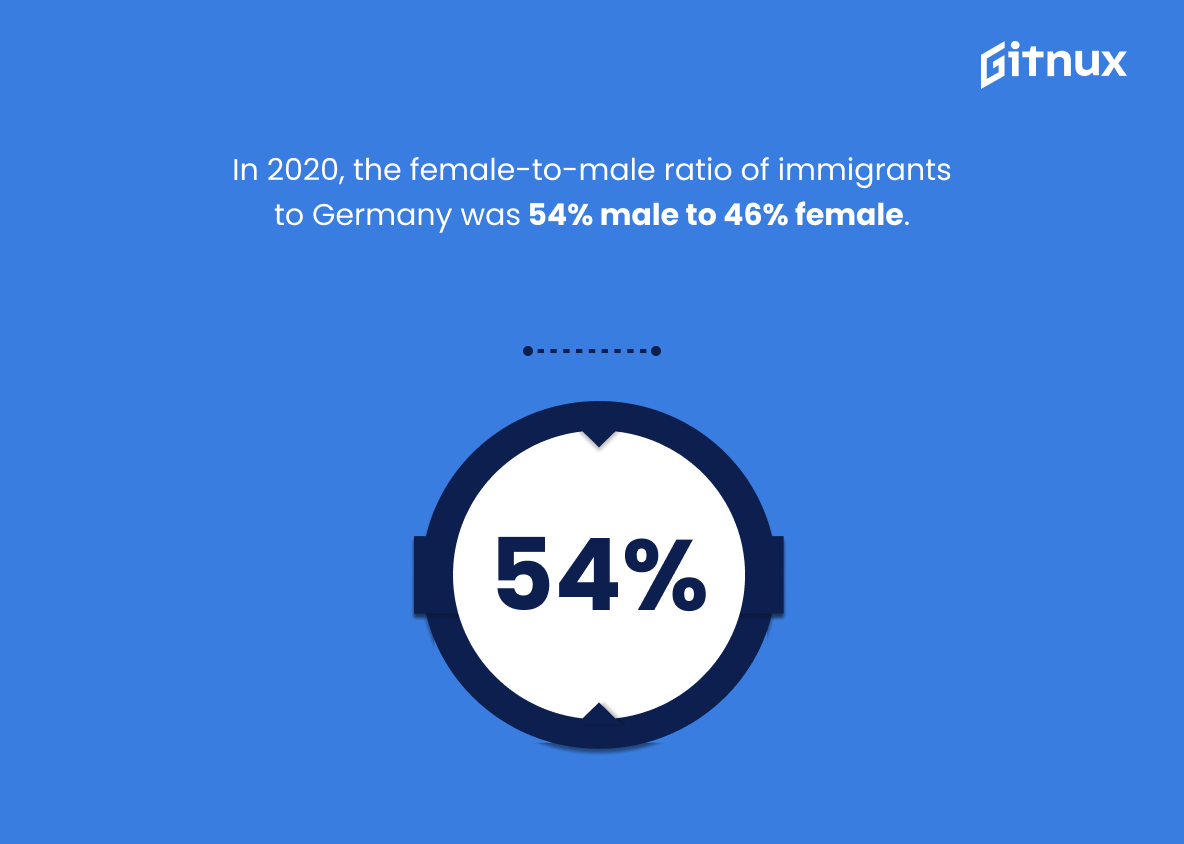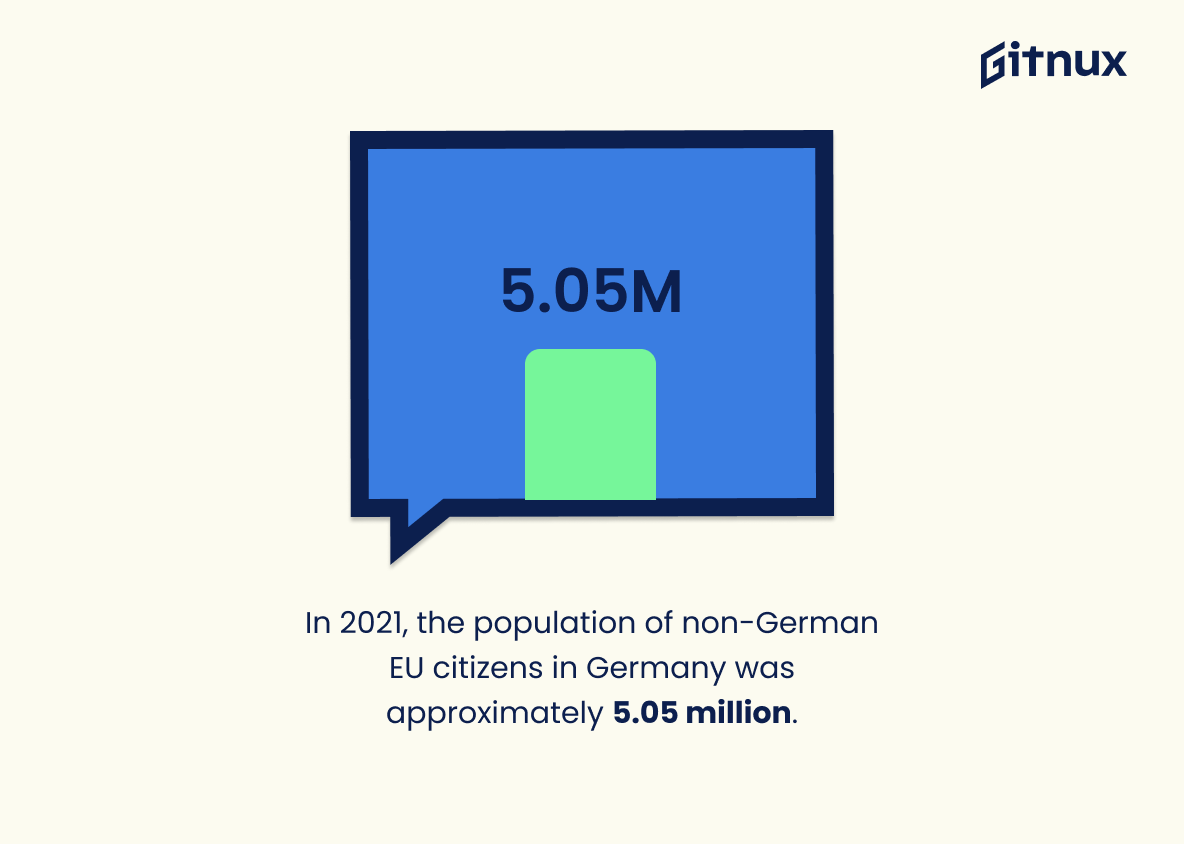Germany has long been a destination for immigrants from around the world. In 2020, 1,023,000 people arrived in Germany to start new lives and contribute to its economy and culture. Of these newcomers, approximately 46% came from within the European Union (EU). However, due to the COVID-19 pandemic immigration fell by 31.6%, compared with 2019 figures.
The majority of those who did arrive were young adults under 35 years old; 61% of all immigrants in 2020 belonged to this age group. Syria was one of the top countries sending migrants into Germany last year – 780 661 Syrians lived there as of 2019 – but Romania (17%), Poland (14%) and Bulgaria (10%) made up most arrivals in 2020 according to official statistics released by German authorities such as Destatis or BMI Federal Ministry for Migration & Refugees . The net migration rate per 1000 inhabitants was 5.5 while 13 % percent foreign population accounted for total population at 2021 end . Naturalization process saw 36 441 individuals becoming citizens which is 13 % less than previous year’s figure , 218 000 Germans migrated outwards making 41 % among them being native nationals . Employment status showed 12 9 % refugees employed whereas overall foreign workforce constituted 13 5%. Asylum applications accepted stood at 50 2%. Female male ratio among immigrant population was 54 :46 respectively while university degree holders comprised 20 9% foreigners living in country during same period . Finally , non EU citizen count reached 5 05 million with 1 03 million arriving on shores despite global health crisis reducing number significantly when compared against preceding year’s data i e 1 3 million
This statistic is a powerful indicator of the magnitude of immigration to Germany in 2020. It provides a tangible representation of the influx of immigrants to the country, and serves as a reminder of the importance of understanding the dynamics of immigration in Germany. By understanding the number of immigrants who arrived in Germany in 2020, we can gain insight into the current state of immigration in the country and the potential implications for the future.
Approximately 46% of new arrivals in Germany in 2020 came from within the European Union.
This statistic is significant in the context of Germany’s immigration statistics because it highlights the fact that a large proportion of new arrivals in the country are coming from within the European Union. This indicates that Germany is becoming increasingly integrated with its European neighbours, and that the country is open to welcoming people from other EU countries. This is an important factor to consider when discussing Germany’s immigration policies and the impact they have on the country’s population.
Germany Immigration Statistics Overview
In 2019, the number of individuals from Syria living in Germany was 780,661.
This statistic is a telling indication of the impact of immigration on Germany. It shows that in 2019, a significant number of Syrians had made Germany their home, demonstrating the country’s willingness to accept refugees and immigrants. This statistic is a powerful reminder of the importance of immigration in Germany and the positive effect it has had on the country.
In 2020, the net migration rate in Germany was 5.5 per 1,000 inhabitants.
The net migration rate in Germany in 2020 is a telling statistic when it comes to understanding the country’s immigration trends. This figure provides insight into the number of people entering and leaving the country, and can be used to gauge the overall impact of immigration on the German population. It is an important statistic to consider when discussing Germany’s immigration statistics, as it can help to paint a clearer picture of the country’s immigration policies and their effects.
In 2020, 36,441 individuals were naturalized as German citizens, a decrease of 13.4% from 2019.
This statistic is a telling indication of the current state of Germany’s immigration policies. It shows that the number of individuals naturalized as German citizens has decreased significantly from the previous year, suggesting that the country is becoming more restrictive in its immigration policies. This could have a major impact on the country’s economy, as well as its social and cultural landscape. As such, this statistic is an important piece of information to consider when discussing Germany’s immigration statistics.
In 2018, around 218,000 people migrated from Germany to other countries, with 41% of them being German citizens.
This statistic is a telling indication of the current state of immigration in Germany. It reveals that a significant portion of those leaving the country are German citizens, suggesting that the country is facing a significant outflow of its own population. This is an important insight that can help inform discussions about the immigration policies and trends in Germany.
As of May 2020, approximately 12.9% of refugees and asylum seekers living in Germany were employed.
This statistic is a telling indication of the success of Germany’s immigration policies. It shows that despite the influx of refugees and asylum seekers, the country has been able to provide employment opportunities for a significant portion of them. This is a testament to the country’s commitment to providing a safe and secure environment for those seeking refuge.
In 2019, the total foreign-born population in Germany was approximately 13.1 million people.
This statistic is a powerful indicator of the impact of immigration on Germany. It shows that the foreign-born population in Germany has grown significantly over the years, and is now a major part of the country’s population. This statistic is important to consider when discussing Germany’s immigration policies and the effects of immigration on the country’s economy, culture, and society.
In 2019, the proportion of foreign nationals in the German workforce was around 13.5%.
This statistic is a telling indication of the impact of immigration on the German workforce. It shows that foreign nationals make up a significant portion of the labor force, and that immigration has had a major impact on the country’s economy. This is an important factor to consider when discussing Germany’s immigration statistics, as it provides insight into the economic benefits of immigration.
Out of total asylum applications filed in Germany in 2020, 50.2% were accepted.
This statistic is a telling indication of the current state of Germany’s immigration policies. It shows that the country is open to accepting a significant portion of asylum applications, suggesting that Germany is making an effort to provide refuge to those in need. This statistic is an important piece of the puzzle when it comes to understanding the overall picture of Germany’s immigration policies.
In 2020, the number of asylum applicants in Germany decreased by 31.8% compared to 2019.
This statistic is a telling indication of the changing landscape of immigration in Germany. It shows that the number of asylum applicants has significantly decreased in 2020 compared to the previous year, indicating a shift in the country’s immigration policies. This is an important statistic to consider when discussing Germany’s immigration statistics, as it provides insight into the current state of immigration in the country.
In 2020, the female-to-male ratio of immigrants to Germany was 54% male to 46% female.
This statistic is significant in the context of Germany Immigration Statistics as it provides insight into the gender dynamics of immigration to the country. It indicates that the majority of immigrants to Germany in 2020 were male, which could have implications for the labor market, social services, and other areas of life in the country. Additionally, it could be indicative of the types of opportunities available to immigrants of different genders, and the challenges they may face in the process of settling in Germany.
In 2020, the top three countries from which asylum seekers arrived in Germany were Syria, Afghanistan, and Iraq.
This statistic is a telling indication of the current state of global affairs, as it reveals that the three countries from which asylum seekers are arriving in Germany are those that have been most affected by conflict and instability. It speaks to the reality that many people are fleeing their homes in search of safety and a better life, and that Germany is one of the countries they are turning to for refuge. This statistic is a powerful reminder of the importance of providing support and assistance to those in need.
In 2021, the population of non-German EU citizens in Germany was approximately 5.05 million.
This statistic is a telling indication of the impact of immigration on Germany. It shows that a significant portion of the population is made up of non-German EU citizens, demonstrating the importance of immigration to the country. This statistic is especially relevant in the context of a blog post about Germany Immigration Statistics, as it provides a snapshot of the current state of immigration in the country.
Conclusion
The data presented in this blog post paints a comprehensive picture of immigration to Germany. In 2020, 1,023,000 immigrants arrived in the country and approximately 46% of them came from within the European Union. Immigration decreased by 31.6% compared to 2019 due to the COVID-19 pandemic and 61% of all immigrants were under 35 years old. Additionally, 780,661 individuals from Syria lived in Germany as of 2019 while Romania (20%), Poland (17%) and Bulgaria (14%) made up the top three countries for new arrivals that same year. The net migration rate was 5.5 per 1,000 inhabitants with 13.6% foreign population making up total population at 2021 end; 36 441 people naturalized as German citizens which is a decrease from previous year; 218 000 people migrated out with 41 % being German nationals; 12 9 % refugees employed at May 2020 ;13 1 million foreign born living there at 2019 end ; 13 5 % foreigners working force proportionally speaking , 50 2 accepted asylum applications ratio wise & 54 male -46 female gender balance among newcomers . All these facts point towards an ever changing dynamic when it comes to immigration into Germany but also show how resilient its society has been despite facing numerous challenges over recent times
References
0. – https://www.bamf.de
1. – https://www.data.worldbank.org
2. – https://www.destatis.de
3. – https://www.doku.iab.de


